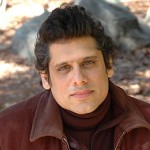Op-Ed: Nicholas Kristof and the Politics of Writing About Women’s Oppression in Darker Nations
By Sunil Bhatia
On February 13, 2013, Nicholas Kristof gave a talk at Connecticut College in New London, Connecticut. His talk, titled Striving for Global Justice, was based on his bestselling book and documentary, Half the Sky: Turning Oppression into Opportunity for Women World Wide. I applaud Kristof and co-author Sheryl WuDunn for focusing on three crucial gender related issues in Half the Sky: 1) sex trafficking and forced prostitution; 2) gender based violence, including an emphasis on honor killings and mass rape; and 3) high rates of maternal mortality. I support Kristof for advancing causes for education and empowerment of women. But I also believe that by making himself the central, solo, and dominant hero in the narrative of fighting gender inequality, Kristof tends to undercut the very goals of women’s empowerment that he espouses so vociferously.
Unquestionably, there is room for individual acts of intervention, and not all structural problems related to poverty and women’s oppression will be solved in a few decades or even in a century. However, Kristof’s urge to “save” people and do good is precisely the urge that also blinds him to the complex problems associated with poverty. Teju Cole writes in The Atlantic that Kristof’s “good heart does not always allow him to think constellationally.” He is blind to configurations of power and the multilayered politics that lie behind the tragedies that are unfolding in the local areas he covers.
Elliott Prasse-Freeman has identified four common themes in Kristof’s stories of women’s oppression. Lets take a moment to trace the key narrative themes of his stories: 1) Typically a barbaric or demonic African or Asian person or some groups of Asians or Africans are shown as being responsible for unleashing horrific acts of violence on women or young children; 2) Kristof provides explicit descriptions of violence and mutilation done to a brown or black woman’s body– who is usually depicted as powerless and is shown to have no agency and self. She is usually just a body; 3) Then there is an insertion of an actual or real savior figure (typically a white Westerner or an American celebrity) who rescues this woman’s body, heals and listens to the victim; 4) Kristof makes superficial attempts to connect victims’ story to the larger structures in which the story is embedded. He will mention the structural determinants of women’s oppression in his stories, but will straightaway dismiss them as complex, too difficult to implement, and mired in bureaucracy.
What many of Kristof’s critics are simply asking him to do is this: 1) Acknowledge his racial and social location and how his positionality allows him to intervene in the lives of the oppressed; 2) Become aware that the oppressed women he writes about have agency and voice and he should stop depicting entire non-European cultures in Orientalist terms; 3) Start situating women’s oppression within a series of intersecting problems that are created by structures of colonialism, corruption, patriarchy, casteism, imperialism, capitalism, lack of education and civil transparency, and absence of law and order; 4) Acknowledge, study, and give credit to the many small and big historical and contemporary social movements related to anticolonial struggles, upliftment of Dalits, women’s equality, empowerment and human rights, and anti-poverty movements that Africans and Asians have created and sustained; 5) Articulate America’s roles as current Empire and Europe’s role as an old empire in contributing to the problems that exist in postcolonial developing countries.
Social Location
Kristof never really explores in depth in his book, documentary, or his columns about how his position as an American, white, male journalist or how his power and privilege as a New York Times columnist allow him to trespass other cultures and become an observer to human tragedies. How does he get to interview a young girl from Somaliland about genital cutting? Would the opposite be true, asks Sayantani Das Gupta: “Would Kristof, a middle-aged reporter, so blithely asks a 14-year old U.S. rape survivor to describe her experiences in front of cameras, her family and other onlookers? Would he sit smilingly in a European woman’s house asking her to describe the state of her genitals to him?” This voyeuristic viewing of raped, assaulted, and diseased black and brown women under the Western gaze easily reinforces preexisting ideas of American superiority, white privilege, and American exceptionalism.
Local Voices
One deep assumption in Half the Sky, both the book and the documentary, is that women’s oppression becomes an issue only when Kristof and American celebrities choose to study and write about it. A close reading of his book buttresses the colonial discourse that brown and black men and women hav eneither the intellectual capacity nor the inclination to solve their social problems. This is another dangerous assumption that undermines Kristof’s cause. In the documentary Half the Sky, there is a very telling scene when his wife and co-author, Sheryl WuDunn, says: “These are things that society has tolerated for so long, so to get someone to say that is wrong—it takes a special person to do that.” And who are these special people? They are obviously Kristof, WuDunn, and famous Americans such as Diane Lane, George Clooney, Hillary Clinton, Angelina Jolie, Demi Moore, and a host of other celebrities who are featured in the documentary.
Cultural Representations
There is a particular point in the documentary, Half the Sky, when Kristof is discussing the issue of female genital cutting in Africa. Kristof is having a conversation about genital cutting with Diane Lane and he tells her, “That may be their culture, but it a pretty lousy aspect of their culture.” To me, genital cutting is not a morally defensible position, but this trope of casting entire cultures through a primitive, barbaric lens is an old (now recycled) imperial trope used by colonial powers to civilize the “natives” in their colonies. The American government deployed a similar trope in justifying their wars in Afghanistan and Iraq. One of the stated purposes of American intervention in Afghanistan in 2001 was to kill the perpetrators of 9/11 and to free women from “oppressive” Islamic traditions. The old colonial forms of empire have today been transformed into what Laura Augustín has called the “Rescue Industry” and what Teju Cole has called the “White Savior Industrial Complex.” The Rescue Industry, like the War on Terror, notes Augustín, relies on an image of the “barbaric other” or the “victimized other” who is voiceless and needs to be saved. As Nigerian writer Chimamanda Adichie reminds us, there are inherent dangers in a single story.
Lack of Women’s Agency
Kristof says that he gives voice to the voiceless, but he rarely allows women to speak as full human beings. Kristof and WuDunn (2009, p. xxii) believe they have started an “incipient movement to emancipate women and fight global poverty.” Prior to their arrival on the scene of emancipation, it seems there were no other social movements in Africa and Asia. Half The Sky is a brilliantly constructed heroic narrative of American saviors, who in one stroke, manage to erase over 200 years of efforts by South Asians and Africans to resist the brutality of European colonialism and their struggles for women’s upliftment, human rights of Dalits, anti-corruption movements, and the like.
American and European Complicity
Kristof rarely explains how European extraction of precious raw materials, exploitation of native farmers and land resources in colonized territories, unfair tax laws, exportation of resources to the empire, employment of indentured and slave labor, and sustained suppression of colonial subjects over centuries stunted women’s development in postcolonial societies. Neither does he venture into analysis of how neoliberal policies pursued by the International Monetary Fund, World Bank and the “Washington Consensus” required many debtor nations in Africa and Asia in the early 1980s to pull back from their support for the public sector and state-based employment programs in exchange for participating in structural adjustment programs (SAPs). Mike Davis (2007), author of Planet of the Slums, has shown how U.S. government backed SAP’s had terrible consequence for rural farmers in Asia and Africa who owned small pieces of land. The stories of women’s oppression that Kristof documents in India, Somaliland, Darfur, and Pakistan are, in part, shaped by the retreat of the state and the neoliberal policies pursued by the United States government and European states.
In sum, let me be clear here: I am not disputing that women’s oppression exists globally. Women’s oppression on a global scale is brutal, violent, and devastating. Eradicating women’s oppression is indeed, as Kristof highlights, one of the moral challenges of our times. Period. The questions before us, then, include how to study this moral challenge; who can study this challenge; what is the role of outsiders and insiders in studying the oppressed; who benefits from studying poverty; what does it mean to care; and how do we intervene. In short, what do we do with the awareness and knowledge that we have gained about Others?
________________________________________________
 Sunil Bhatia is Professor and Chair of Human Development at Connecticut College. His research focuses on the development of self and identity within the context of postcolonial migration, globalization, and formation of transnational diasporas. In particular, his work attempts to reformulate the concept of culture and identity in cultural psychology and human development by showing how critical concepts, such as diaspora and transnational migration, force us to redefine theories of culture, identity, cultural difference, and development. He is the author of American Karma: Race, Culture, and Identity in the Indian Diaspora(NYU Press, 2007) and his forthcoming book, Globalization and Culture: Narratives of Indian Youth from Call Centers to Chai Stalls, will be published by Oxford University Press.
Sunil Bhatia is Professor and Chair of Human Development at Connecticut College. His research focuses on the development of self and identity within the context of postcolonial migration, globalization, and formation of transnational diasporas. In particular, his work attempts to reformulate the concept of culture and identity in cultural psychology and human development by showing how critical concepts, such as diaspora and transnational migration, force us to redefine theories of culture, identity, cultural difference, and development. He is the author of American Karma: Race, Culture, and Identity in the Indian Diaspora(NYU Press, 2007) and his forthcoming book, Globalization and Culture: Narratives of Indian Youth from Call Centers to Chai Stalls, will be published by Oxford University Press.






28 Comments